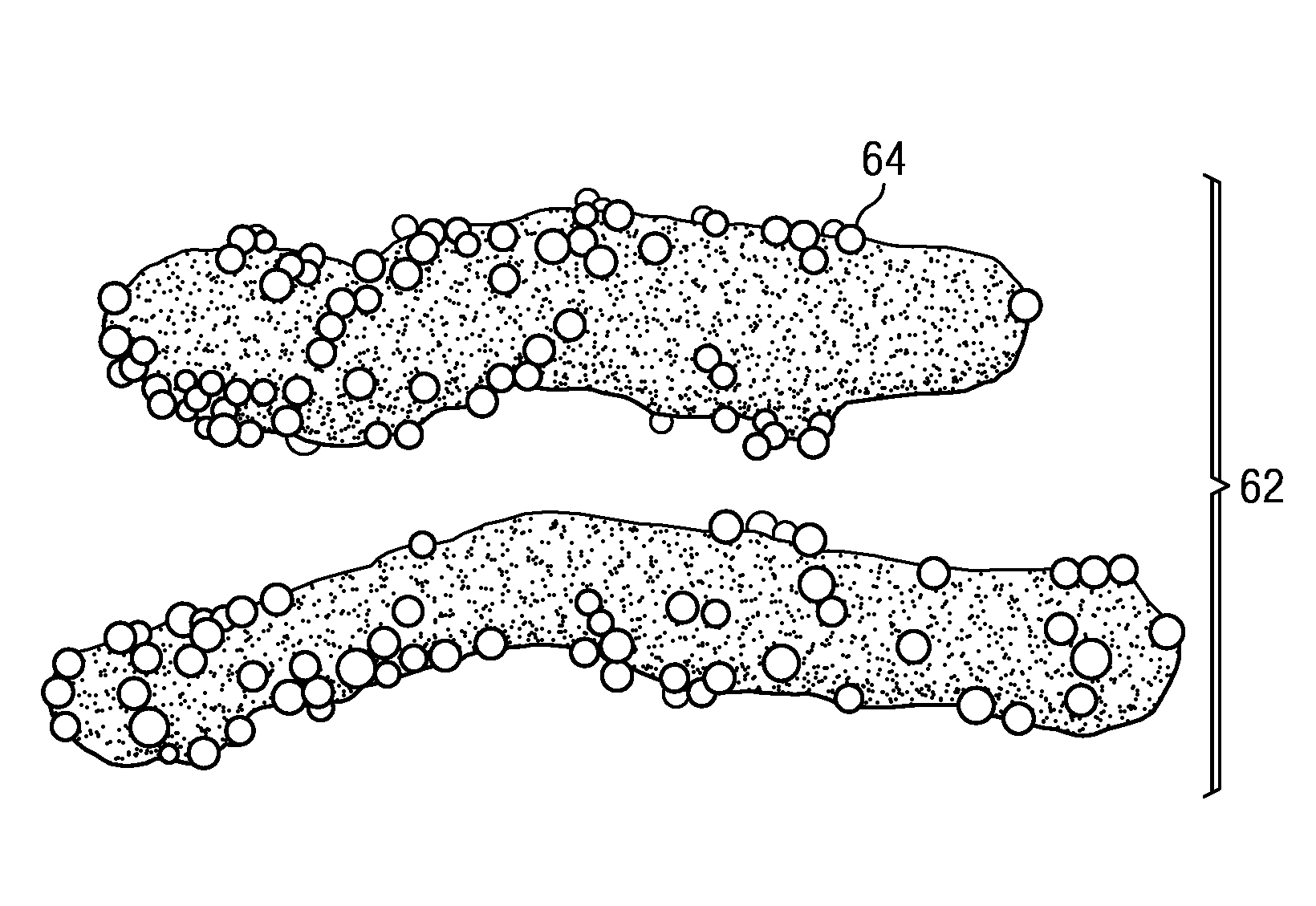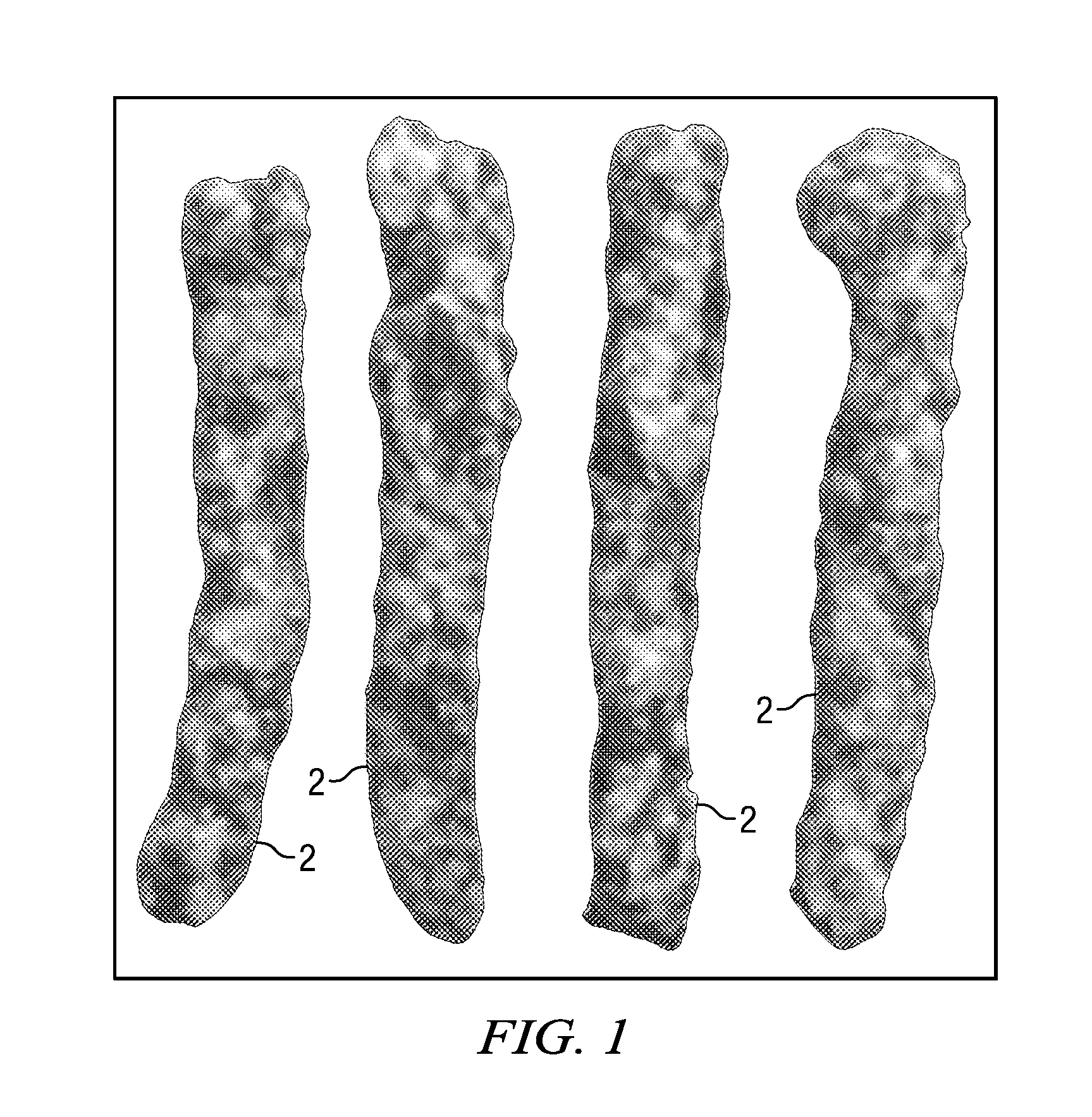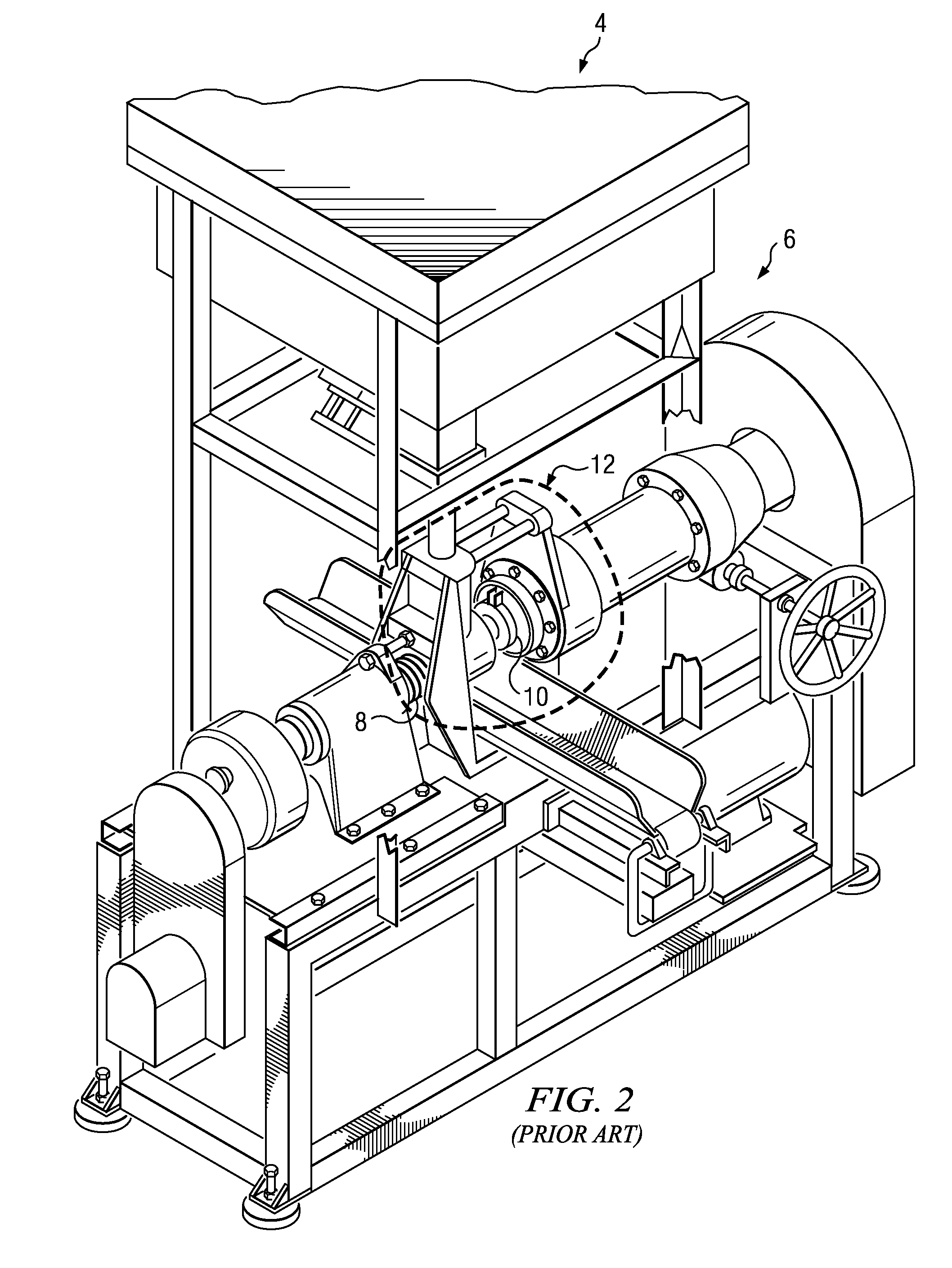Micropellets of Fine Particle Nutrients and Methods of Incorporating Same into Snack Food Products
a technology of micropellets and nutrients, applied in the field of micropellets of fine particle nutrients and methods of incorporating same into snack food products, can solve the problems of affecting the taste of food, and affecting the quality of food,
- Summary
- Abstract
- Description
- Claims
- Application Information
AI Technical Summary
Benefits of technology
Problems solved by technology
Method used
Image
Examples
example 1
Milk Protein Micropellet Formation
[0100]Micropellets were prepared using milk protein isolate (MPI) protein for the production of random collets. Micropellets were produced on a Pavan extrusion line consisting of a single screw extruder (G-55 Extruder) and the forming extruder (F55), as discussed above. The material was cooked and then fed into the forming extrusion line to form the dough. A die comprising multiple orifices with a diameter of about 0.8 mm was used together with the high speed cutter to obtain the desired product shape. Cut micropellets were collected via a hopper and dried overnight in a forced air convection oven.
[0101]The micropellets were produced using three different protein levels of protein to starch ratios: 60:40; 70:30; and 80:20. Different starches were also tested with the MPI. First, MPI was run together with a resistant starch, under the brand name ActiStar manufactured by Cargill). However, this combination led to very poor expansion of the micropellet...
example 2
Soy Protein Micropellet Formation
[0103]Micropellets of soy protein isolate (SPI) were also manufactured and tested for suitable expansion properties. SPI micropellets were manufactured with extrusion methods using (1) native corn starch and (2) waxy corn starch at levels of about 60:40 and about 70:30. The moisture within the random extruder was measured to about 17.5% with an auger speed of about 130 rpm and a rotor speed of about 650 rpm. Better expansion was seen with the SPI:waxy corn starch micropellets upon frying. It was observed that higher levels of starch lead to more expansion upon frying.
example 3
Whey Protein Micropellet Formation
[0104]Micropellets of whey protein isolate (WPI) together with native potato starch were also manufactured and evaluated. However, the WPI mixtures were not easily extruded for forming into the micropellets and the materials had already caked in the pre-conditioning steps, forming very sticky doughs. To mitigate the stickiness, about 50% of the WPI was substituted with SPI in a protein to starch ratio of about 60:40 (with the protein fraction composed of about 50% WPI and about 50% SPI. This reduced the stickiness and produced suitable micropellets, however the product rate was substantially slower due to the poor wetting properties of WPI. It is believed that instantized WPI may be a more suitable protein for formation of micropellets with subsequent expansion.
PUM
 Login to View More
Login to View More Abstract
Description
Claims
Application Information
 Login to View More
Login to View More - Generate Ideas
- Intellectual Property
- Life Sciences
- Materials
- Tech Scout
- Unparalleled Data Quality
- Higher Quality Content
- 60% Fewer Hallucinations
Browse by: Latest US Patents, China's latest patents, Technical Efficacy Thesaurus, Application Domain, Technology Topic, Popular Technical Reports.
© 2025 PatSnap. All rights reserved.Legal|Privacy policy|Modern Slavery Act Transparency Statement|Sitemap|About US| Contact US: help@patsnap.com



